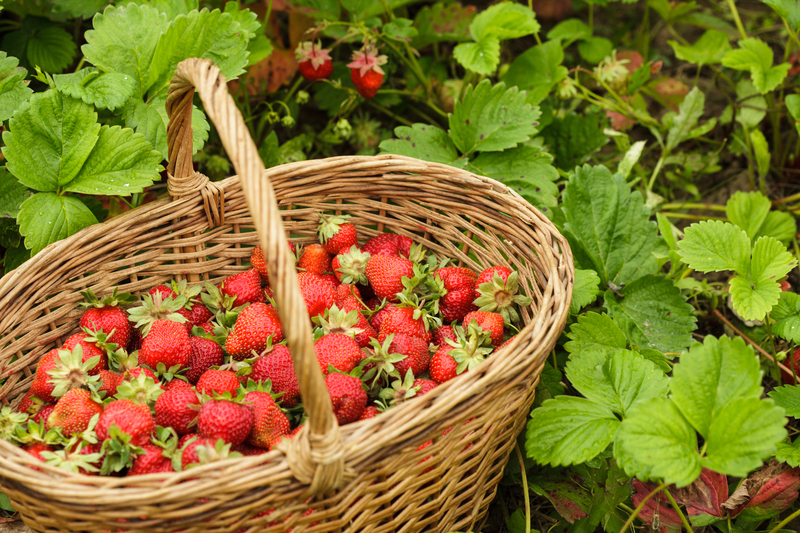Ways to Safeguard Your Plants During Winter Months
Posted on 24/05/2025
Ways to Safeguard Your Plants During Winter Months
Winter months can be particularly harsh on your precious garden, exposing plants to cold temperatures, frost, wind, and unexpected weather fluctuations. Properly protecting your plants in winter is crucial for their survival and well-being. Whether you're cultivating delicate perennials, robust evergreens, or potted beauties, knowing the best strategies to safeguard your plants can make all the difference as temperatures drop.
Understanding the Challenges of Winter for Plants
Before exploring ways to protect your plants during winter months, it's important to recognize the main threats they face:
- Frost and Freezing Temperatures: Ice crystals can damage plant cells and roots.
- Dehydration: Dry winter winds and frozen ground prevent roots from accessing water.
- Heavy Snow and Ice: The weight can break branches and crush stems.
- Reduced Sunlight: Shorter days limit photosynthesis.
- Pest and Disease: Some pests persist and can damage vulnerable plants.
With these risks in mind, let's discuss effective methods to safeguard your plants during chilly months and ensure their survival until spring.

1. Choose the Right Plants for Your Climate
Prevention starts with smart selection. When planning your garden, always select winter-hardy and zone-appropriate plants. These species are naturally adapted to withstand local winter conditions, making them less susceptible to damage.
- Consult the USDA Hardiness Zone Map or your country's equivalent.
- Opt for native or well-acclimated perennial varieties.
- Test the microclimates in your yard - sheltered spots may support tender plants.
2. Mulching: Nature's Winter Blanket
Mulching is one of the most effective ways to safeguard plant roots from freezing. A thick layer of mulch insulates soil, reducing temperature fluctuations and helping roots retain moisture.
How to Mulch Properly for Winter Protection
- Apply mulch after the first hard frost to avoid rodents nesting underneath.
- Use 2-6 inches of material like straw, shredded leaves, pine needles, or bark.
- Keep mulch a few inches away from stems to prevent rot.
- In spring, gradually remove or thin mulch as the weather warms.
3. Wrapping and Covering Plants
Physical barriers can protect sensitive plants from wind, snow, and frost. Consider these essential plant protection techniques:
Burlap and Frost Cloths
- Use burlap wraps for shrubs and young trees; secure loosely to allow airflow.
- Frost cloths or horticultural fleece are perfect for protecting ornamentals on especially cold nights.
- Remove covers when temperatures rise during the day.
Cloche and Plastic Tunnels
- For smaller plants, cloches (glass or plastic domes) act as mini-greenhouses.
- Tunnels made with hoops and plastic sheeting shield rows of vegetables from cold winds.
- Ensure ventilation to prevent mold and excess humidity.
4. Watering Wisdom: Hydrating Before the Freeze
Dehydration is a hidden danger during winter as dry winds and frozen soil hinder water uptake. Thoroughly water your plants before the ground freezes, especially evergreens that continue to lose moisture through their leaves.
- Water deeply in late autumn, when the soil is not yet frozen.
- Avoid watering during hard freezes to prevent root damage.
- Check on container plants frequently, as pots dry out faster.
5. Pruning and Plant Maintenance
Proper pruning can prevent winter damage and strengthen your plants. Here's what you should keep in mind:
- Prune deciduous trees and shrubs after they go dormant to avoid stimulating new growth.
- Remove dead or diseased branches to prevent breakage under snow and ice.
- Avoid heavy pruning in autumn, which can stress plants before winter sets in.
6. Move Containers to Sheltered Spots
Container plants are exceptionally vulnerable in cold weather as roots have less insulation.
- Move pots to a sheltered area such as a garage, shed, or against a south-facing wall.
- Group pots together for shared warmth and wrap containers in bubble wrap, burlap, or old blankets for extra insulation.
- For tropical plants, bring them indoors before frost hits.
7. Anti-Desiccant Sprays for Evergreens
Wind and sun can cause evergreens to lose moisture faster than they can replace it in winter. Anti-desiccant sprays form a protective coating on leaves to reduce moisture loss.
- Apply as directed in late autumn and throughout the winter if needed.
- Only use products labeled safe for your specific plant species.
- Do not apply in freezing conditions or direct sunlight.
8. Protecting New and Young Plants
Seedlings and recently planted trees or shrubs are at greater risk during winter months. Special attention is needed to ensure their survival:
- Provide extra mulching around delicate roots and trunks.
- Use tree guards to protect young trees from rodents and frost cracks.
- Stake and tie young trees to prevent wind damage.
9. Monitor Local Weather and Act Swiftly
Staying informed is essential when safeguarding your garden in winter months. Rapid temperature drops or unexpected frosts require quick action.
- Check local forecasts regularly, especially before predicted cold snaps.
- Keep materials like burlap, frost cloth, and mulch ready for emergencies.
- Be prepared to cover and uncover plants promptly as weather shifts.
10. Use Cold Frames and Greenhouses
Cold frames and greenhouses are invaluable tools for winter plant protection, extending the growing season for many vegetables and tender plants.
- Cold frames trap solar heat and protect plants from snow, wind, and heavy frost - perfect for winter greens and root crops.
- Greenhouses offer the most control; ensure adequate airflow and avoid excess humidity by ventilating on sunny days.
- Position frames and greenhouses in a spot with full winter sun.
11. Snow Management: Friend and Foe
While snow can act as a natural insulator, too much can be damaging.
- Gently brush heavy snow off branches with a broom to avoid breakage.
- Do not use salt-based de-icers near plants - opt for sand or kitty litter for walkways.
- If an ice storm hits, avoid removing ice by force; let it melt naturally to prevent plant injury.
12. Watch for Winter Pests and Diseases
Winter doesn't eliminate all pests or pathogens. Rodents, deer, rabbits, and some fungal diseases continue to pose threats during cold months.
- Wrap trunks of young trees to prevent rodent gnawing.
- Set up fencing or repellents for deer and rabbits.
- Remove fallen leaves and debris to limit disease spread.
- Monitor evergreen branches for scale insects and treat as needed.
13. Leverage Microclimates in Your Garden
Not all areas in your yard experience winter equally. Identify sheltered spots that receive more sunshine or less wind, and use these microclimates to your advantage.
- Plant tender species on the south or west side of structures for added warmth.
- Use fences, walls, and hedges as windbreaks.
- Consider raised beds, which warm earlier in spring and drain better during wet winters.
14. Indoor Strategies: Overwintering Tender Plants
For certain prized annuals, herbs, or non-hardy perennials, bringing them indoors is the best winter protection.
- Acclimate plants to indoor conditions gradually before the first frost.
- Place in bright, cool rooms away from drafts and direct heat sources.
- Reduce watering in winter; too much can cause root rot.
- Check regularly for pests like spider mites and treat promptly.

15. Plan Ahead for Spring Recovery
Despite your best winter care, some plants may suffer damage. Develop a spring strategy to help them bounce back:
- Assess winter injury and prune dead or damaged sections.
- Fertilize and water as needed to encourage regrowth.
- Divide and replant crowded or struggling perennials.
Conclusion: Nurturing Your Garden Through Winter
As you can see, there are many comprehensive strategies to safeguard your plants during the winter months. With a blend of simple precautions and timely interventions, you can ensure your garden emerges next spring as healthy and vibrant as ever. By understanding your local climate, choosing the right plants, and applying season-specific techniques like mulching, covering, watering, and monitoring pests, you'll be well-equipped to protect your plants from the cold and nurture them through even the harshest winter weather.
Prepare early, act diligently, and your plants will reward you with lush green growth once winter has passed. Happy gardening - and may your garden flourish in every season!



